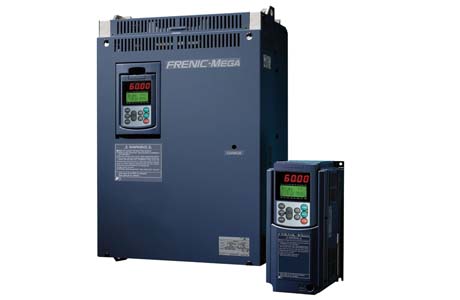Working Principle of VFD
Have you thought about how we can make our motors work better and use less energy? The answer is with something called Variable Frequency Drives, or VFDs for short. These are special devices that help control how fast a motor runs by changing the power it gets. This makes our motors run just right, saving energy and making them last longer.
VFDs work by taking the regular power, changing it a bit inside, and then giving it to the motor in a way that lets us control the speed easily. It’s a really smart way to make motors work better in all sorts of machines. Here we can learn about How it works and why should i use VFD. Let me explain to you.
What is VFD?
A Variable Frequency Drive (VFD) is a type of motor controller that drives an electric motor by varying the frequency and voltage of its power supply. It enables precise control of motor speed, enhancing process efficiency and reducing energy consumption.
In industrial applications, VFDs are crucial for optimizing machine performance and extending equipment life, making them a key component in modern automation and control systems.
How does a Variable Frequency Drive work?
A VFD works by adjusting the power supply’s frequency and voltage to an electric motor. This modulation allows for precise control of motor speed, aligning it with specific operational requirements. It’s a key tool in industrial automation, enhancing process control, energy efficiency, and equipment longevity.
Working Principle of VFD:
Power Conversion: Initially, the VFD converts the incoming AC (alternating current) power to DC (direct current) using a rectifier. This is the first stage of the process, where the sinusoidal AC power is flattened into a direct current.
DC Bus: After rectification, the DC power is temporarily stored in a DC bus. This bus consists of capacitors that smooth out the energy flow, ensuring a steady DC output.
Inverter Stage: The next crucial stage involves an inverter. This inverter takes the smooth DC from the bus and converts it back into AC. However, unlike the input AC, this output can have its frequency adjusted. This is the key function of the VFD.
Frequency Control: The frequency of the output AC dictates the speed of the motor. By adjusting this frequency, the VFD can finely control the motor speed. Higher frequencies increase the motor speed, while lower frequencies decrease it.
Microcontroller Unit: Modern VFDs feature a microcontroller unit (MCU) that accurately controls the process. It receives system inputs, processes them, and adjusts motor frequency for efficient, responsive operation.
Energy Efficiency: By matching the motor speed to the actual load requirements, VFDs significantly improve energy efficiency. This not only saves power but also reduces wear and tear on the motor, extending its lifespan.
Why Should I Use a VFD?
Using a Variable Frequency Drive (VFD) offers several significant advantages in motor control applications, making them an essential component in modern industrial and commercial settings.
VFDs also enhance process control by delivering precise speed adjustment, vital in systems like conveyor belts, pumps, and ventilation, where consistent speed contributes to quality and productivity. Additionally, they help in reducing power fluctuations that often occur during motor start-up, thus ensuring a more stable electrical environment.
In terms of cost-effectiveness, VFDs stand out. They boost energy efficiency, leading to noticeable reductions in operational expenses. The initial cost of a VFD is often balanced by long-term savings in energy consumption and maintenance costs.
Their adaptability across a range of applications is another key benefit. VFDs can be integrated into various systems, eliminating the need for additional mechanical components such as gearboxes, which simplifies the overall setup and reduces maintenance requirements.
Reading Further:
Conclusion:
Variable Frequency Drives (VFDs) are pivotal in modern industrial and commercial applications, revolutionizing motor control through enhanced efficiency and precision. By adjusting motor speed to match specific operational needs, they significantly reduce energy consumption and operational costs.
The sophisticated yet practical working principle of VFDs, involving power conversion and frequency modulation, ensures optimal performance and longevity of motors. Their ability to provide precise control, coupled with energy savings and reduced wear on equipment, makes VFDs a cost-effective and indispensable tool.
The integration of VFDs across various systems simplifies processes and maintenance, highlighting their versatility and importance in advancing industrial automation and control.

